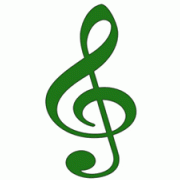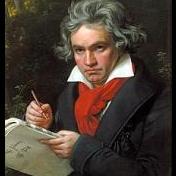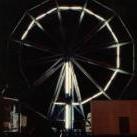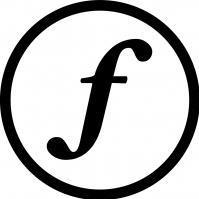Leaderboard
Popular Content
Showing content with the highest reputation on 10/23/2019 in all areas
-
The suite's finally up! A lot of movements have been posted here already, but it is a different experience all the way through (if I do say so myself 🙂). Movements 3 and 5 have not been uploaded here before if you want to skip to those, though. Enjoy!1 point
-
Sometimes I like to visit this style, my way. Nocturno en octubre.pdfNocturno en octubre.mp31 point
-
My fairy tale bagatelle for bassoon and piano duet with sheet music - I'm happy with this one and would love to hear your guys' opinion on it! Just want to be a better composer 🙂1 point
-
I have been arranging mostly Beethoven and Mozart lately. I figured it was time to change that and arrange a piece by a different composer. It has also been a long time since I arranged a piece for piano, either duet or solo. So I was wondering what would fit into a Piano Duet arrangement well. I immediately narrowed things down to orchestral works. I figured that for the best chances of fitting into a Piano Duet, I would want to stick to those composed in the Classical Era. I know from experience that Beethoven is hard to fit into a Piano Duet, not to mention the resulting arrangement being hard to play. This left me with only 1 other composer really, that being Franz Joseph Haydn. And of course, if I am going to arrange an orchestral work by Haydn, it is going to be one of his 100+ symphonies. The one I am most familiar with is his "Surprise" Symphony, probably the most well known Haydn symphony in existence. It ranks up there with Symphony no 40 K 550 and Beethoven's Fifth in terms of familiarity. The most famous part of that symphony is the second movement, where out of nowhere, the whole orchestra blares out a fortissimo chord. Another surprise in the second movement is the sudden jolt from C major to C minor. But, you know me, I always arrange the first movement first, even if it isn't the most well known part of the piece. I found that so far, Haydn fits pretty well into a Piano Duet arrangement, fitting better than Mozart and way better than Beethoven to the ensemble of a Piano Duet. So far, I have arranged the entire first movement of the symphony. Now, before you go on about impossible hand crossings, I arranged this for 2 Pianos 4 Hands. So there are no hand crossings between pianists, just hand crossings between notes played by the same pianist. This is the edition of the symphony I have been using from IMSLP: http://ks.imslp.net/files/imglnks/usimg/0/09/IMSLP494069-PMLP34746-2_IMSLP284343-PMLP461683-Hayd_Sinf_2.pdf Here is the first movement of Haydn's "Surprise" Symphony arranged for a Piano Duet. What do you think of my Haydn arrangement so far?1 point
-
Hello all! I wrote this for my quartet to perform in church. Happy to hear thoughts. Please note that there will be a lot more push and pull of the tempo in the live version of this. Please follow along with the score to see when certain shifts occur. It has become somewhat of a style of mine to use the space traditionally used for tempo markings for other things. I note push and pull of tempo here as well as general dynamic markings and moods. Best, Mori1 point
-
I'm glad you didn't post the score. It lets me focus on the music. It works very well hearing all the movements. Sometimes that makes a big difference, because the transitions are important too. Very idiomatic for the piano as I would expect, showcasing all registers, timbres and textures, both sustained and percussive. It shows a certain equanimity and evennees of emotion, or lack of it sometimes. I think the open fifths contributed to that. But there were welcome emotional parts as well that I liked. Some reminded me of Meredith Monk a little. It is a well balanced work with the proper pace for its length. Very enjoyable.1 point
-
1 point
-
It sounds similar to a Two Steps from Hell opening.1 point
-
I used boring C -mostly. My music theory is not where it should be. I had to do parts of that over again too. Since the previous sounded like a melodic mess. A lot needs to be redone.1 point
-
@Esper It sounds very uplifting what scale/scales did you use?1 point
-
Just listened to the entire suite. I must say I am very impressed with how unobtrusive it is. And I love the melancholic sonorities of the work! I think the 4th movement (the flower) is my favorite, although the last one (the moon) is also really good. When can we expect a score? One criticism I have is that all the movements sound largely the same. In fact, I had to go back to the video (I was working on something else) to see if I was listening to a different movement. This is probably owing to the deliberate unreserved nature of these movements and not necessarily to a lack of compositional depth, but it is an observation I had. Overall, fantastic job!1 point
-
The oscillation between the mixolydian mode was a nice touch. My main two things were the spacing in mm. 16-17, and the use of consecutive dissonances in motion (i.e. 4ths to 4ths, 5ths to 4ths, 7ths to 4ths), which wouldn't be an issue in most cases, but when the melody line holds and the other voices take over sometimes it feels a little empty. Nice little work, though.1 point
-
It's okay! We're all making stuff up as we go. Regarding your second paragraph sentence to sentence: 1. Correct. 2. Correct. 3. This means that if your shared material was the A section of Twinkle, Twinkle, for example (C C G G A A G F F E E D D C), then the following material would sound different from all of your other movements, but sound as though the way you wrote it in this movement was the way it was intended all along. Imagine each movement being a cohesive unit, all using the same starting material, but with each sounding like it was the way you wanted to take that shared material all along. 4. Sort of, but more than that it's meant to show that you can see material as not functionally fixated; that is to say, what's written and heard is malleable and can be used in many different ways. I just want you to show me those ways 🙂 Feel free to ask more questions if you have them. I believe I have the information to provide sufficient answers.1 point
-
A very lovely piece indeed. I almost fear praising you too much, but I found that while the themes and writing in general was influenced by Chopin to some degree they were still fascinating and original. Combined with the carefree yet romantic feel you have so expertly conveyed it is certainly one of my favorite compositions of recent years, and I must admit that I have already listened to it several times. Personally, If I was performing this piece I would probably be very tempted to play the main theme from Measure 3 onwards a bit faster than the tempo you have prescribed, perhaps even more so when it returns later on, but that is only because I would be so engrossed in it’s beauty. Though it is really only a matter of personal opinion I also thought the section preceding the Adagio from Measure 38 - 41 was a bit harsh, but that takes nothing away from the fact that it is a piece I would love to see in concert one day. Bravo!1 point
-
This is a wonderful little impromptu ! I can only imagine it would sound even better in a real piano performance ...1 point
-
It was very interesting and nice. I like the melodies and structure of it. And I'm glad that contemporary authors are still remembering that music has to be beautiful. Very well done.1 point











